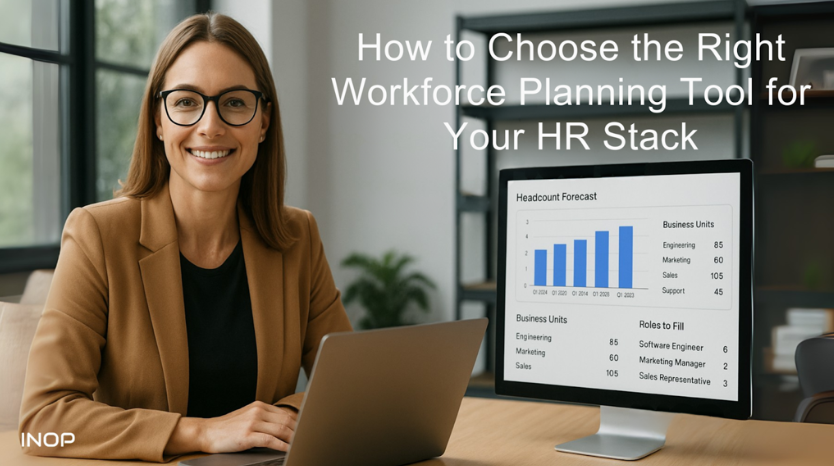In today’s fast-paced business world, selecting the ideal workforce planning tool can make or break your HR strategy. With predictive analytics, cost modeling, and integrated reporting as core features, the right software can save you hours of manual work, support strategic decision‑making, and align your talent with organisational goals. This guide will explain how to choose the perfect workforce planning tool for your HR stack—so you get powerful insights without unnecessary complexity.
Understanding Your Workforce Planning Needs
Before evaluating tools, clarify what your team truly needs. Reflect on:
- Scale and complexity: Do you manage 50 employees or 5,000 across multiple regions?
- Planning focus: Are you modelling headcount, budgeting, skills development, or scenario forecasting?
- Integration requirements: Should the tool integrate with your HRIS, payroll, learning management system, or talent analytics platform?
Matching a tool’s capabilities to your functional needs ensures you avoid overbuying or missing critical features.
Key Features to Look For
Predictive Analytics & Scenario Modelling
Robust tools use AI-driven algorithms to forecast headcount, identify skill gaps, and simulate scenarios—e.g., “What happens if turnover spikes by 10%?” or “What’s our cost impact if we upscale or downsize?”
Skills-Based Insights
Tools that support workforce forecasting and skills mapping help you spot internal talent pools, reduce external hiring costs, and enable targeted development initiatives.
Real-Time Dashboards & Reporting
Look for customizable dashboards with drill-down capabilities (e.g., by department, region, or role) and automated report generation to support regular updates to leadership.
Seamless Integration
The ideal tool synchronises with systems like HRIS, learning platforms, payroll, and talent analytics solutions—ensuring data flows smoothly without manual imports.
User-Focused Interface
Choose a solution with intuitive design: drag-and-drop planning, visual org charts, and clear visual summaries help various stakeholders engage meaningfully with the tool.
Suggested Article: Benefits of Workforce Planning
Explore a Smarter Workforce Planning Solution
If you’re looking for a tool that goes beyond static spreadsheets and delivers real-time insights, predictive analytics, and skills-based planning, consider trying INOP Strategic Workforce Planning Tool. It’s built to help HR leaders like you:
- Forecast headcount with confidence
- Align talent with strategic goals
- Identify skill gaps and internal mobility opportunities
- Model budget impacts across scenarios in minutes
Unlike traditional systems, INOP Workforce Planning Tool integrates seamlessly into your existing HR stack and scales as your organization grows.
👉 Learn more about our strategic workforce planning solution
Comparing Popular Workforce Planning Tools
We’ll compare three solutions to illustrate how they differentiate across your evaluation criteria:
| Feature | INOP Strategic Workforce | Traditional HRIS Add-On | Forecasting-Only Tool |
|---|---|---|---|
| AI predictive modelling | ✅ Advanced & adaptive | ⚠️ Limited | ✅ Yes |
| Skills-gap analysis | ✅ Built-in | ⚠️ Optional modules | ❌ |
| Budget integration & costing | ✅ Yes | ✅ Limited | ❌ |
| Scenario simulation | ✅ Highly flexible | ⚠️ Basic | ✅ Often |
| Integration with HRIS/LMS | ✅ Deep | ✅ Native | ⚠️ Limited |
| User-friendly interface | ✅ Modern UX | ⚠️ Complex dashboards | ⚠️ Text-heavy |
Spot Hidden Talent more easily when the tool integrates skills data and identifies employees ready for promotion or rotation.
Balancing Cost & Value
Workforce planning tools range from $10/user/month to six-figure enterprise licenses. When comparing prices:
- Calculate ROI: Estimate savings from improved staffing efficiency, reduced turnover, and fewer external hires.
- Start small: Begin with essential features; add modules later once value is proven.
- Include implementation: Factor in setup, training, integrations, and ongoing support into your total cost of ownership.
Implementation Best Practices
To maximise tool adoption and ROI:
- Define roles: Assign clear responsibilities—who updates data, who runs forecasts, who reviews outputs?
- Train broadly: Ensure HR, finance, and managers understand capabilities and workflows.
- Align cadence: Integrate forecasting into monthly or quarterly business reviews and budget cycles.
- Measure success: Track KPIs such as forecast accuracy, internal mobility rate, and time-to-hire improvements.
Integrating Planning with Broader HR Strategy
A workforce planning tool is most effective when it supports other talent functions:
- Align with talent acquisition: Plan external hiring and internal moves together—then track fill rates.
- Support learning & development: Forecast skill gaps and feed them into training plans.
- Include compensation planning: Understand budget impact and market competitiveness.
- Embed DEI objectives: Use forecasting to set diversity goals and monitor progress over time.
Making the Final Decision
When evaluating vendors:
- Request demos that use your real data—see how your org works in the tool.
- Pilot with one department to test usability and impact.
- Collect stakeholder feedback on clarity, tool speed, and reporting.
- Assess support quality and ongoing feature development roadmap.
Conclusion
Choosing the right workforce planning tool hinges on aligning functional needs, key features, cost considerations, and integration with broader HR strategy. With predictive analytics, skills insights, and real‑time reporting, the right tool helps you spot hidden talent, budget more precisely, and navigate uncertainty with confidence.
Take the next step: arrange a demo using your data, start with a pilot team, and plan for stakeholder training. Your HR stack—and your organisation’s future—will thank you.
FAQ
What is the difference between workforce planning tools and HRIS?
Workforce planning software focuses on predictive modelling, scenario analysis, and strategic headcount planning—whereas HRIS primarily handles transactional HR functions like onboarding and payroll.
How often should we run forecasts?
Best practice is quarterly forecasting aligned with budgeting cycles, with refreshes after significant events (mergers, layoffs, strategic pivots).
Can small businesses use workforce planning tools?
Absolutely. Cloud-based solutions often support SMBs, offering modular deployment and scalability.
How do we measure success after implementation?
Track improvements in forecast accuracy, hiring speed, internal mobility, cost savings, and stakeholder satisfaction.
